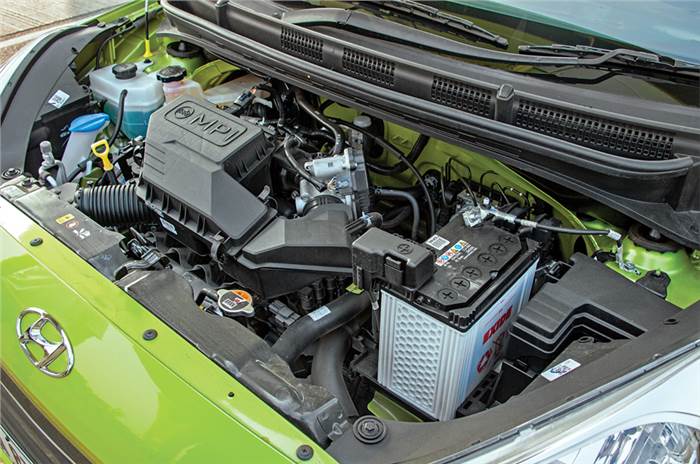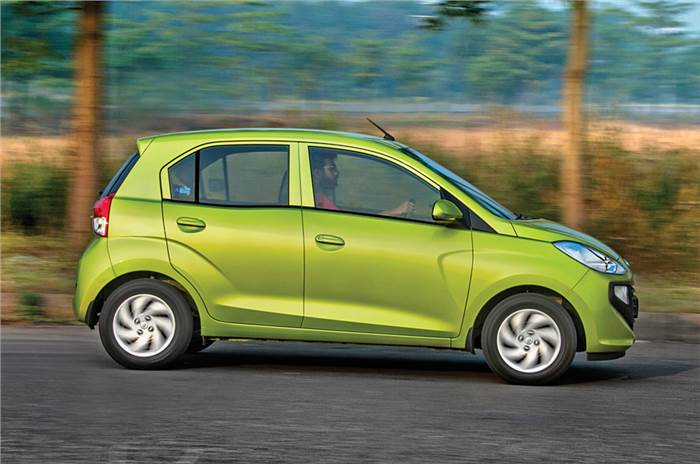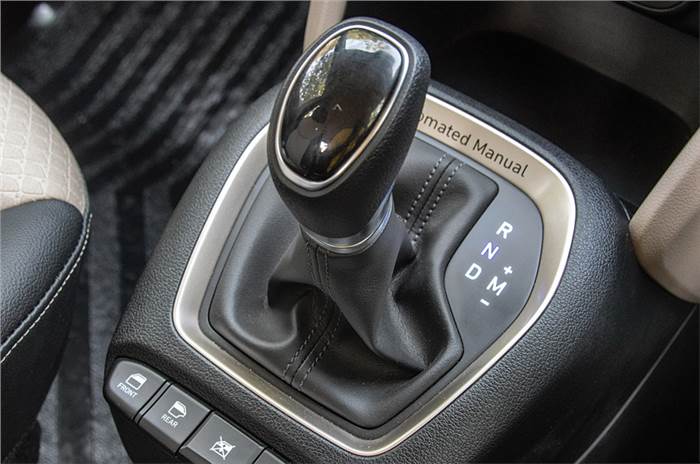2018 Hyundai Santro review, road test
The original Hyundai Santro was synonymous with practicality, ease of use and efficiency. Does the new, second-gen car live up to the legendary name?
Published on Nov 27, 2018 05:09:00 PM
84,988 Views
Follow us on

New car is wider and longer than the original Santro, and isn’t as upright in stance.

Well-finished cabin has a lot of feel-good elements. Black interior with green trim exclusive with Dana Green exterior paint.

Large windows and generous space make rear section feel airy.
In times when downsizing is the buzzword, it’s unusual for a mass-market hatchback to be launched with a four-cylinder engine. In fact, the Santro is the only car with a four-pot engine among its peers; all its closest rivals are powered by three-cylinder units. Thing is, the Santro’s 1.1-litre engine is not new and is actually the same unit that powered the Santro Xing and i10. Hyundai did have newer engines from the Kappa family to choose from but they would have worked out to be too expensive. The Santro’s cast iron block and three-valve-per-cylinder engine might not be cutting edge but it has been upgraded and is also future-proof in the sense it can be made to meet BS-VI emission standard when the regulations kick in in 2020. The engine’s 69hp and 99Nm are par for the course for this class but are far from the Tata Tiago 1.2 petrol’s class-leading 85hp and 114Nm.

The very first point of note when you start up the Santro is how refined the engine is. There’s little noise from the engine bay at idle and there are no vibrations, the likes of which you’d experience in the Santro’s three-cylinder rivals. The petrol-manual Santro doesn’t race off the line like its shorter-geared predecessor with the same engine did. Performance on the new Santro is measured up to 2,000rpm, at which point the engine ‘opens up’. It’s the mid-range that the Santro feels most comfortable in; there’s enough performance on tap to keep up with the flow of traffic and overtake when need be. It may not feel it but the Santro is among the quicker cars when talking in-gear acceleration. It’s as quick as a Datsun Go from 10-30kph in second, almost at par with the Celerio from 20-40kph in third (the Maruti is faster from 30-50kph in third) and is just shy of the Celerio’s class-best 60-80kph in fourth gear. And, if only for academic interest, the Santro’s 0-100kph time of 14.85sec is second only to the Celerio’s 14.24sec figure.
The Santro is by no means a sporty car and there’s not much to gain by extending the engine to the upper reaches of the rev range. Do so, and you’ll experience the engine’s less happy and noisier side. Likewise, the five-speed manual gearbox isn’t suited to quick shifts and isn’t the smoothest unit from Hyundai either; that it is light and comes allied to a clutch that requires little effort is more pertinent here.

The Santro automatic that removes the clutch pedal out of the equation entirely is also more than satisfactory. The automated manual transmission has been developed in-house by Hyundai and is based on the manual’s 5-speed gearbox. It’s not perfect but is superior to most other AMT systems out there. There is a pronounced pause between the first and second gears, which is annoying in stop-and-go rush-hour traffic. However, the shifts smoothen out in the higher gears; you get less of that head nod AMTs are notorious for and, in general, the auto shifts are timely. Even Creep mode works well and the transition from off throttle to on throttle is smooth too. There’s no Sport mode but you can use the gear lever to affect manual shifts, and it is quite responsive to manual inputs too. Where the AMT gets caught out is on inclines. There’s significant rollback before the clutch engages and, on really long climbs, the gearbox also seems indecisive of the right ratio to be in. To be fair, these are issues on all budget-car AMT systems.

Copyright (c) Autocar India. All rights reserved.














Comments
Member Login
Personal Details
No comments yet. Be the first to comment.